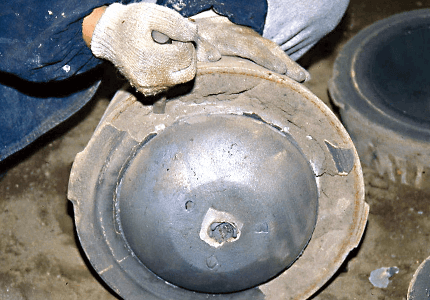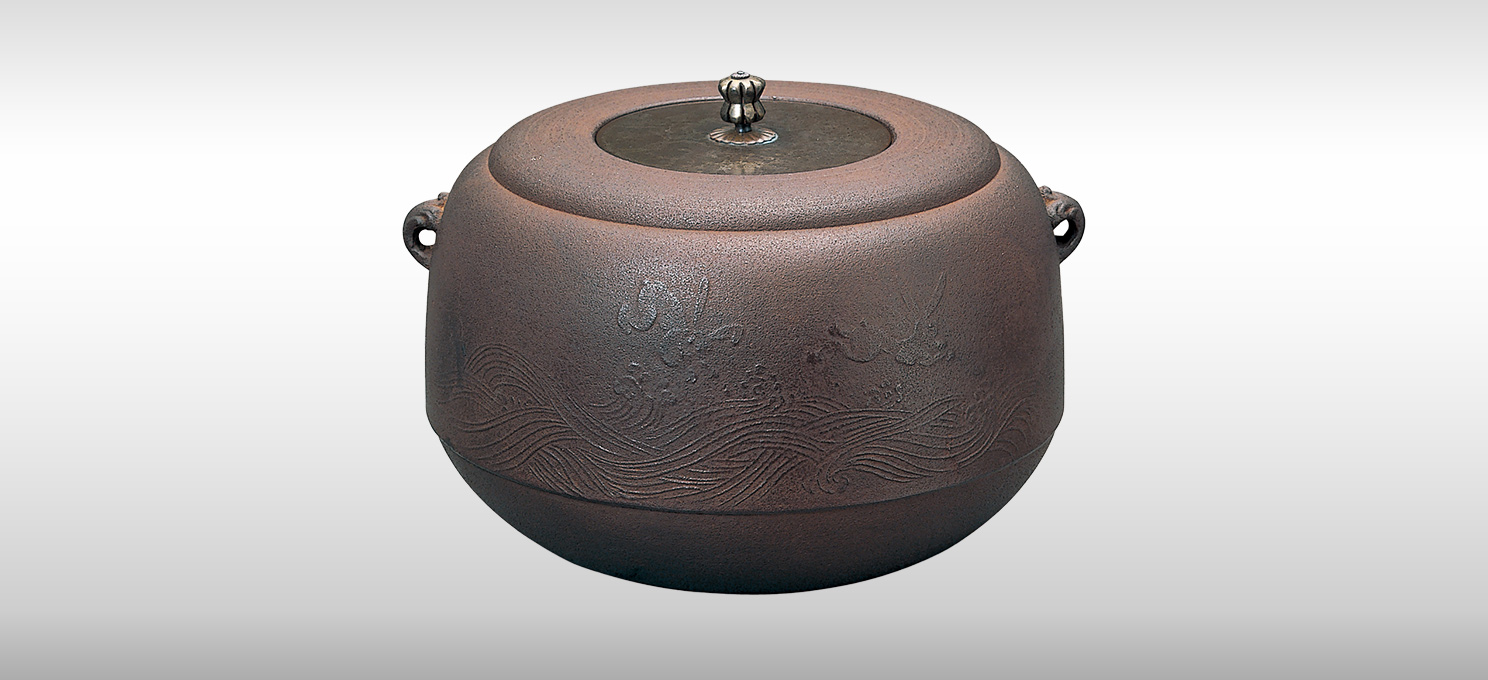
Description
In clay mold casting (sōgata), a symmetrical mold is produced by rotating a template called a strickle board in a mixture of sand and clay to shape the walls of the mold. Clay mold casting is predominantly used to produce tea ceremony kettles and temple bells. After the piece is removed from the mold, it is heated and painted with lacquer (urushi) or a solution of iron, vinegar, and alcohol known as ohaguro (“teeth blackening liquid”) to produce a unique, dark finish.
Process
- STEP 1
A symmetrical mold is created from a mixture of sand and clay using a rotating template.
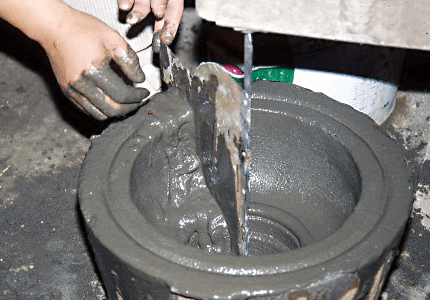
- STEP 2
A spatula is used to draw decorative designs into the clay before it dries.
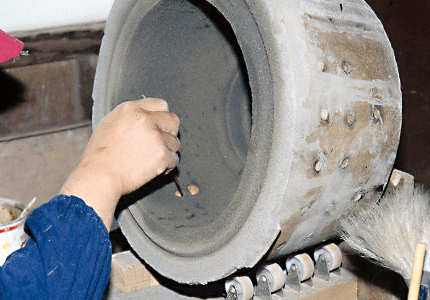
- STEP 3
Clay is packed into the mold, and metal is poured into the gaps.
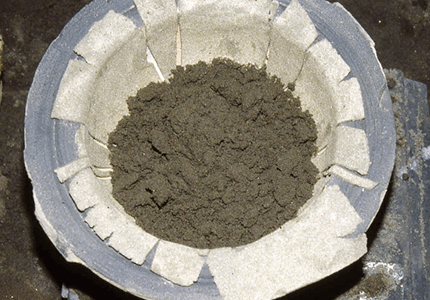
- STEP 4
The mold is broken open and the piece is taken out.
